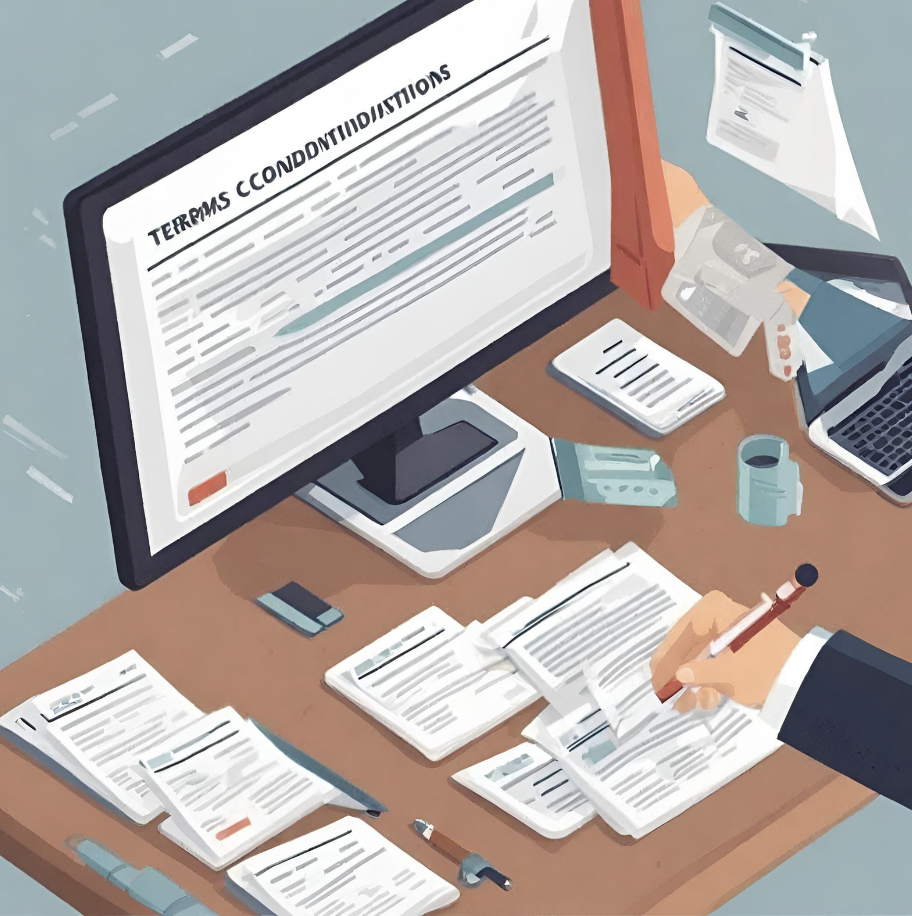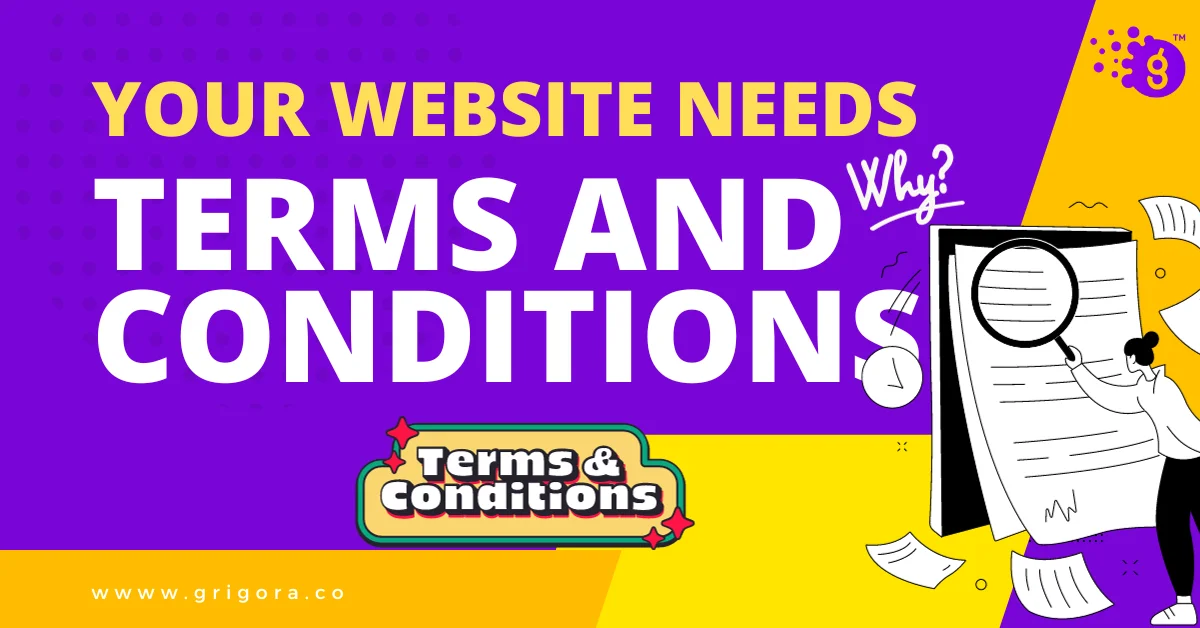Introduction
In the dynamic landscape of the online world, having a robust set of terms and conditions for your website is not just a formality but a necessity. It serves as a legal binding between the website owner and the users, outlining the rules and guidelines that govern the use of the website.
The Legal Landscape of the Online World
In recent years, the digital space has become more regulated, with various laws enacted to protect both businesses and consumers. This has made it imperative for website owners to have a well-drafted terms and conditions page that adheres to the legal standards and safeguards the interests of all parties involved.
"In the face of evolving online regulations, a terms and conditions page serves as your first line of defense against potential legal troubles."
Why Terms and Conditions are More Than Just a Formality
Beyond legal compliance, having terms and conditions grants website owners control over how their content is used, helping to prevent misuse and protect intellectual property. It also fosters transparency, allowing you to clearly state your business practices, thus building trust with your users.
By setting the ground rules, you not only protect your business but also offer a clear guide to users, helping to foster a respectful and safe online community around your brand.
The 11 Crucial Reasons For Having T&C

In the dynamic landscape of the online world, having a robust terms and conditions page is not just a formality but a necessity. It serves as a legal shield, protecting both the website owner and the users while fostering a trustworthy environment. Let's delve deeper into the 11 pivotal reasons that elucidate why incorporating terms and conditions on your website is indispensable:
Legal Protection
User Guidelines
Protecting Rights
Compliance with Laws
Dispute Resolution
Limiting Liability
Transparency
Control Over Content
Payment and Refund Policies
Privacy Protection
SEO Benefits
Let's explore each reason in detail to understand their significance in the smooth functioning of a website.
1. Legal Protection
Shielding from Potential Lawsuits
Having a well-drafted terms and conditions page can act as a safeguard against potential lawsuits. It can clearly define the legal obligations of both the website owner and the users, thereby reducing the risk of legal disputes. By setting forth the rules of engagement, it helps in avoiding misunderstandings that can lead to litigation.
Protecting Intellectual Property
A terms and conditions page is also a tool to protect the intellectual property of a website. It can stipulate the ownership of the content, including logos, images, and texts, ensuring that they are not misused or replicated without permission. This section can set the ground rules for the usage of the website's intellectual assets, granting protection against unauthorized use and potential infringements.
2. User Guidelines
Setting the Rules for Using the Website
A terms and conditions page is essential in setting the ground rules for using your website. It helps in delineating what is considered acceptable behavior while using the website. This could encompass a range of issues including commenting on blog posts, uploading content, and the repercussions of misuse. By clearly stating the rules, it helps in maintaining a respectful and harmonious environment for all users.
Clarifying Acceptable User Behavior
This section can also be used to clarify what constitutes acceptable user behavior on the website. It can detail the actions that are considered a breach of the terms and conditions, and the potential consequences of such breaches. This could include actions such as spamming, harassing other users, or posting inappropriate content. By having a detailed section on user guidelines, it ensures that users are well-informed about the rules, promoting a safe and respectful user experience.
3. Protecting Rights
Safeguarding Your Rights as a Website Owner
Having a terms and conditions page is pivotal in safeguarding your rights as a website owner. It grants you the legal backing to govern your website the way you see fit, including the right to ban users who do not adhere to the rules stipulated in the terms and conditions. This section can also cover the ownership of the content and the website’s layout, protecting you from potential intellectual property theft.
Protecting User Rights
On the flip side, it is also about protecting the rights of the users. It ensures that users are aware of their rights when they use your website, including privacy rights and the right to voice their opinions in a respectful manner. This dual protection fosters a trustworthy relationship between the website owner and the users, creating a harmonious online community.
4. Compliance with Laws
Adhering to Regulatory Requirements
In the digital landscape, various laws govern the operation of websites. Adhering to regulatory requirements is not just about avoiding legal troubles; it’s about showcasing your website as a responsible and law-abiding entity. This involves complying with consumer protection laws, copyright laws, and other relevant legislations that apply to online businesses.
Avoiding Legal Penalties
Non-compliance with the necessary laws can lead to severe legal penalties, including hefty fines and a tarnished reputation. Having a well-drafted terms and conditions page can act as a shield, helping you avoid such repercussions by ensuring that your website operates within the legal boundaries set by the authorities.
5. Dispute Resolution
Outlining the Process for Resolving Disputes
Disputes are almost inevitable when running a website. Hence, it is prudent to have a clearly outlined process for resolving disputes in your terms and conditions. This section can detail the steps a user needs to take if they have a grievance, thereby providing a structured pathway to address issues amicably and professionally.
Setting the Jurisdiction for Legal Matters
In the event that a dispute escalates to a legal matter, the terms and conditions can specify the jurisdiction where such matters will be resolved. This is a crucial clause that can potentially save you from facing legal actions in various regions, confining it to your local jurisdiction, which can be more favorable and familiar to you.
6. Limiting Liability
Defining the Limit of Your Responsibility
In the online space, it is essential to define the boundaries of your responsibility as a website owner. This section in the terms and conditions helps in delineating the extent to which you can be held accountable for any issues or damages that might arise from using your website. It safeguards you from unwarranted claims and potential legal hassles.
Protecting Against Unwarranted Claims
By clearly stating the limitations of your liability, you protect yourself from potential lawsuits and claims that can arise due to various reasons such as content inaccuracies, third-party links, or unforeseen downtimes. It is a protective shield that maintains a clear line between the user's responsibility and your own as a website owner.
7. Transparency
Building Trust with Users
In the digital era, transparency is a cornerstone in building trust with your users. Clearly articulating your business practices, policies, and the measures you take to protect user data can foster a trustworthy relationship with your audience. It not only showcases your business's integrity but also encourages users to engage with your website more confidently.
Clarifying Your Business Practices
Clarifying your business practices in the terms and conditions ensures that users are well-informed about how your business operates. It can include details about the services you offer, the pricing structure, and any other relevant business information. Being upfront about your practices can prevent misunderstandings and foster a transparent business-user relationship.
8. Control Over Content
Retaining Rights Over Your Content
Having a terms and conditions section allows you to retain rights over the content you publish on your website. This is crucial in protecting your intellectual property from unauthorized use or distribution. Clearly stating the ownership of the content helps in legally safeguarding your website's unique materials, including texts, images, videos, and other multimedia elements.
Setting Rules for Content Usage
Setting rules for content usage is another pivotal aspect that should be covered in the terms and conditions. It dictates how visitors can use the content available on your website. For instance, it can prohibit users from redistributing, altering, or using the content for commercial purposes without your explicit permission. This section essentially sets the ground rules for engagement with your website's content, ensuring respectful and lawful use of the materials you offer.
9. Payment and Refund Policies
Detailing Your Payment Processes
In the e-commerce landscape, detailing your payment processes is a non-negotiable aspect. It involves elucidating the various payment methods you accept, the security protocols in place to protect transaction details, and the steps involved in completing a purchase. This section fosters trust as customers have clear guidance on how transactions are handled, ensuring a smooth and secure shopping experience.
Outlining Refund and Cancellation Policies
Equally important is outlining your refund and cancellation policies clearly. This section should detail the circumstances under which refunds are permissible, the process to initiate a refund, and the timeline within which refunds will be processed. Having a well-articulated policy not only builds trust but also manages customer expectations effectively, thereby reducing potential disputes and fostering a harmonious business relationship.
10. Privacy Protection
Clarifying How User Data is Handled
In the current digital age, privacy protection is paramount. Your website must have a section that clearly articulates how user data is collected, stored, and utilized. It should offer insights into the kind of data you collect, whether it is shared with third parties, and the measures in place to protect user data. This not only fosters trust but also ensures compliance with various global privacy laws such as the GDPR.
Complying with Privacy Laws
Being in compliance with privacy laws is not just about avoiding legal repercussions; it is about building a reputation of trust and reliability with your users. Detail how your website adheres to legal stipulations, including the rights of the users in relation to their data. This section should also provide information on how users can contact you for any data-related queries or concerns, thus promoting transparency and fostering a secure environment.
11. SEO Benefits
Enhancing SEO Through Transparency
In the competitive online space, SEO (Search Engine Optimization) stands as a pivotal element in ensuring your website's visibility and reach. Having a well-drafted terms and conditions page can actually enhance your SEO. It does so by fostering transparency and showcasing a responsible and lawful business conduct, which search engines tend to favor. It reflects a well-structured and credible website, which can potentially boost your rankings in search engine results.
Building a Reputation with Search Engines
Beyond just user trust, establishing a good reputation with search engines is vital. Search engines have algorithms that prioritize websites adhering to legal and ethical standards. By clearly stating your terms and conditions, you signal to search engines that your website is trustworthy and reliable, which can, in turn, enhance your website's SEO performance. It's a step towards building a long-term, sustainable online presence.
Grigora’s Assistance in Setting Up Terms and Conditions
How Grigora Facilitates Easy Setup
Grigora, being a platform that is designed to cater to the needs of various website creators, understands the importance of having robust terms and conditions. The platform offers features that facilitate the easy setup of terms and conditions. It provides templates and guidance, helping you to craft terms that are comprehensive and tailored to your website’s specific needs, saving you time and potential legal hassles in the future.
Features Offered by Grigora
Grigora stands out by offering a range of features that aid in setting up your website’s terms and conditions. It offers functionalities that allow you to integrate detailed policies seamlessly, ensuring that they are accessible and easy to understand for your website visitors. Moreover, Grigora supports you in maintaining an up-to-date terms and conditions page by notifying you of any legal updates pertinent to your website, helping you to stay compliant and safeguard your online presence effectively.
FAQs
Can I draft the terms and conditions myself?
While it is possible to draft terms and conditions yourself, especially with the aid of templates and tools provided by platforms like Grigora, it is always recommended to seek legal advice to ensure that all necessary legal grounds are covered and that your website is fully protected.
What is the difference between privacy policy and terms and conditions?
While both are legal documents, a privacy policy outlines how a website handles and protects the personal data of its users, adhering to privacy laws. In contrast, terms and conditions set the rules and guidelines for using the website, protecting the website owner from potential liabilities and ensuring a smooth user experience.
Are terms and conditions legally binding?
Yes, terms and conditions are legally binding as long as they are clear, reasonable, and the users have an opportunity to review them before using the website. It is essential to have an "I agree" or similar acknowledgment feature to ensure that the users are bound by them.
How do I enforce the terms and conditions of my website?
Enforcement of terms and conditions generally involves resolving disputes through the legal avenues outlined in the terms themselves, which often include arbitration or court proceedings. It is crucial to have a well-drafted terms and conditions to facilitate enforcement.
What should I do if someone violates the terms and conditions of my website?
In case of a violation, the first step is usually to contact the violator to resolve the issue amicably. If that fails, you may have to resort to the legal remedies specified in your terms and conditions, which could include terminating the user's account or initiating legal proceedings.
Conclusion
The Cumulative Benefits of Having Terms and Conditions
Having terms and conditions on your website is not just a legal requisite but a shield that protects both the website owner and the users. It fosters a transparent and trustworthy environment, where the rules are laid down clearly, avoiding any future disputes. Moreover, it enhances the website's credibility, showcasing professionalism and adherence to legal norms.
Why Skipping on Terms and Conditions is Not an Option
Skipping on terms and conditions is not an advisable route as it opens up a Pandora's box of potential legal troubles. It leaves the website owner vulnerable to unwarranted claims and disputes. Moreover, in the absence of clear terms, users might misuse the website, leading to a chaotic environment. Hence, having detailed terms and conditions is not just a necessity but a mandatory aspect that ensures smooth operation and a harmonious user experience.



